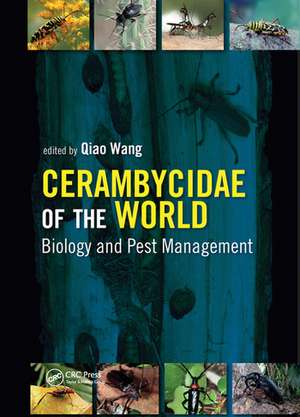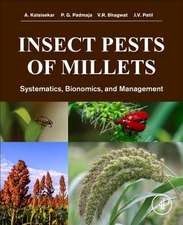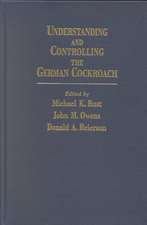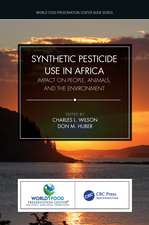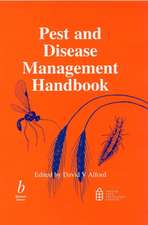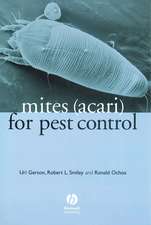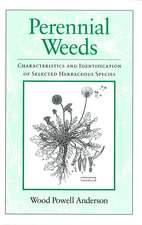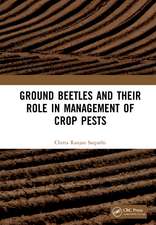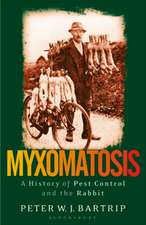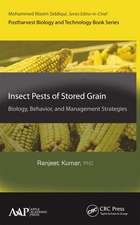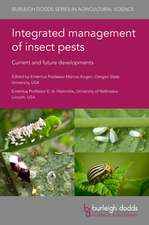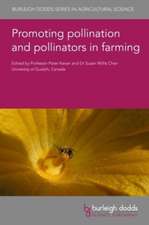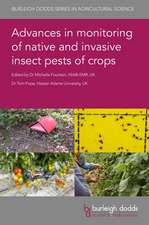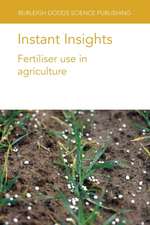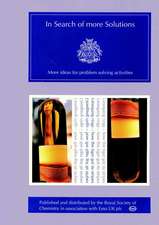Cerambycidae of the World: Biology and Pest Management: Contemporary Topics in Entomology
Editat de Qiao Wangen Limba Engleză Paperback – 30 iun 2020
- Ann M. Ray, Biology, Xavier University, Cincinnati, Ohio in The Quarterly Review of Biology, Volume 94, 2019
There are more than 36,000 described species in the family Cerambycidae in the world. With the significant increase of international trade in the recent decades, many cerambycid species have become major plant pests outside their natural distribution range, causing serious environmental problems at great cost. Cerambycid pests of field, vine, and tree crops and of forest and urban trees cost billions of dollars in production losses, damage to landscapes, and management expenditures worldwide.
Cerambycidae of the World: Biology and Pest Management is the first comprehensive text dealing with all aspects of cerambycid beetles in a global context. It presents our current knowledge on the biology, classification, ecology, plant disease transmission, and biological, cultural, and chemical control tactics including biosecurity measures from across the world.
Written by a team of global experts, this book provides an entrance to the scientific literature on Cerambycidae for scientists in research institutions, primary industries, and universities, and will serve as an essential reference for agricultural and quarantine professionals in governmental departments throughout the world.
Preț: 463.51 lei
Nou
Puncte Express: 695
Preț estimativ în valută:
88.70€ • 96.32$ • 74.51£
88.70€ • 96.32$ • 74.51£
Carte tipărită la comandă
Livrare economică 22 aprilie-06 mai
Preluare comenzi: 021 569.72.76
Specificații
ISBN-13: 9780367573973
ISBN-10: 0367573970
Pagini: 642
Dimensiuni: 178 x 254 x 33 mm
Greutate: 1.1 kg
Ediția:1
Editura: CRC Press
Colecția CRC Press
Seria Contemporary Topics in Entomology
ISBN-10: 0367573970
Pagini: 642
Dimensiuni: 178 x 254 x 33 mm
Greutate: 1.1 kg
Ediția:1
Editura: CRC Press
Colecția CRC Press
Seria Contemporary Topics in Entomology
Public țintă
Academic, Professional Practice & Development, and Professional ReferenceCuprins
Preface
Editor
Contributors
1. General Morphology, Classification, and Biology of Cerambycidae
Marcela L. Monné, Miguel A. Monné, and Qiao Wang
2. Life History and Population Dynamics of Cerambycids
Robert A. Haack, Melody A. Keena, and Dominic Eyre
3. Feeding Biology of Cerambycids
Robert A. Haack
4. Reproductive Biology of Cerambycids
Lawrence M. Hanks and Qiao Wang
5. Chemical Ecology of Cerambycids
Jocelyn G. Millar and Lawrence M. Hanks
6. Cerambycids as Plant Disease Vectors with Special Reference to Pine Wilt
Süleyman Akbulut, Katsumi Togashi, and Marc J. Linit
7. Laboratory Rearing and Handling of Cerambycids
Melody A. Keena
8. Natural Enemies and Biological Control of Cerambycid Pests
Timothy D. Paine
9. Cultural Control of Cerambycid Pests
Qiao Wang
10. Chemical Control of Cerambycid Pests
Qiao Wang
11. Cerambycid Pests in Forests and Urban Trees
Robert A. Haack
12. Cerambycid Pests in Agricultural and Horticultural Crops
Qiao Wang
13. Invasive Cerambycid Pests and Biosecurity Measures
Dominic Eyre and Robert A. Haack
Index
Editor
Contributors
1. General Morphology, Classification, and Biology of Cerambycidae
Marcela L. Monné, Miguel A. Monné, and Qiao Wang
2. Life History and Population Dynamics of Cerambycids
Robert A. Haack, Melody A. Keena, and Dominic Eyre
3. Feeding Biology of Cerambycids
Robert A. Haack
4. Reproductive Biology of Cerambycids
Lawrence M. Hanks and Qiao Wang
5. Chemical Ecology of Cerambycids
Jocelyn G. Millar and Lawrence M. Hanks
6. Cerambycids as Plant Disease Vectors with Special Reference to Pine Wilt
Süleyman Akbulut, Katsumi Togashi, and Marc J. Linit
7. Laboratory Rearing and Handling of Cerambycids
Melody A. Keena
8. Natural Enemies and Biological Control of Cerambycid Pests
Timothy D. Paine
9. Cultural Control of Cerambycid Pests
Qiao Wang
10. Chemical Control of Cerambycid Pests
Qiao Wang
11. Cerambycid Pests in Forests and Urban Trees
Robert A. Haack
12. Cerambycid Pests in Agricultural and Horticultural Crops
Qiao Wang
13. Invasive Cerambycid Pests and Biosecurity Measures
Dominic Eyre and Robert A. Haack
Index
Notă biografică
Qiao Wang, PhD, is a professor of entomology at the Institute of Agriculture and Environment, Massey University, Palmerston North, New Zealand. He earned his MSc under Professor Shu-nan Chiang from Southwest Agricultural University, Chongqing, China, PhD under Professors Ian W.B. Thornton and Tim R. New from La Trobe University, Melbourne, Australia, and postdoctoral experience under Professor Jocelyn G. Millar from the University of California, Riverside, before joining Massey University. He has studied cerambycid beetles since 1982. His research team currently focuses on plant protection, insect behavior, biological control, and evolutionary biology. Dr. Wang’s experience in Australia, China, New Zealand, and the United States is reflected in his more than 300 publications; work with more than 70 postgraduate, postdoctoral, and visiting scientists from around the world; service on editorial boards of a number of international journals and international expert panels; and chairmanship of international conference sessions. Dr. Wang was awarded the 2012 Distinguished Scientist Award by the Entomological Society of America for his outstanding contributions to entomological science during his career.
Recenzii
This recent book comprises 13 chapters summarizing current knowledge of longhorned beetles, with a focus on pest species. Wang has gathered contributions from an impressive cohort of the world’s most respected experts on longhorned beetles. Chapters review both basics of cerambycid taxonomy, mor- phology, and behavior (feeding, reproduction, and chemical ecology), as well as more applied concerns, such as laboratory rearing, pest control, and bio- security. Overall, this volume is a valuable contribution to the literature as a "one-stop shop" for readers seeking a comprehensive overview of longhorned beetles.
Since the 1960s, there have been few works written about the family Cerambycidae as a whole. Cerambycidae of the World is the only recent contribution to the literature with a worldwide focus, and it is a welcome update to the works of earlier authors. Introductory chapters present valuable information about cerambycid classification and natural history. The first chapter contains diagnoses and keys to both larvae and adults of all subfamilies, accompanied with line drawings and/or black-and-white photographs of important characters. Chapters 2 and 4 draw from the global literature to give readers a thorough overview of cerambycid life history and reproductive biology—not an easy task for a family of insects with more than 36,000 species. Later chapters focus on application, featuring excellent contributions from Millar and Hanks (Chapter 5) on pheromones, from Keena (Chapter 7) on laboratory rearing, and from Eyre and Haack (Chapter 13) on cerambycids as invasive species and regulations to prevent introduction of pest species. Each of these chapters stands out for high "citability." Some chapters are written more as encyclopedia entries rather than narrative reviews, making those chapters useful references for individual taxa.
Overall, this book provides an excellent overview of the biology and economic impact of cerambycid beetles. It represents a tremendous effort on the part of Wang and the authors, and has resulted in a much-needed update to the literature. This volume is the only work of its kind available at this time, and is a valuable addition to the library of any scientist studying wood-boring beetles.
- Ann M. Ray, Biology, Xavier University, Cincinnati, Ohio in The Quarterly Review of Biology, Volume 94, 2019
Since the 1960s, there have been few works written about the family Cerambycidae as a whole. Cerambycidae of the World is the only recent contribution to the literature with a worldwide focus, and it is a welcome update to the works of earlier authors. Introductory chapters present valuable information about cerambycid classification and natural history. The first chapter contains diagnoses and keys to both larvae and adults of all subfamilies, accompanied with line drawings and/or black-and-white photographs of important characters. Chapters 2 and 4 draw from the global literature to give readers a thorough overview of cerambycid life history and reproductive biology—not an easy task for a family of insects with more than 36,000 species. Later chapters focus on application, featuring excellent contributions from Millar and Hanks (Chapter 5) on pheromones, from Keena (Chapter 7) on laboratory rearing, and from Eyre and Haack (Chapter 13) on cerambycids as invasive species and regulations to prevent introduction of pest species. Each of these chapters stands out for high "citability." Some chapters are written more as encyclopedia entries rather than narrative reviews, making those chapters useful references for individual taxa.
Overall, this book provides an excellent overview of the biology and economic impact of cerambycid beetles. It represents a tremendous effort on the part of Wang and the authors, and has resulted in a much-needed update to the literature. This volume is the only work of its kind available at this time, and is a valuable addition to the library of any scientist studying wood-boring beetles.
- Ann M. Ray, Biology, Xavier University, Cincinnati, Ohio in The Quarterly Review of Biology, Volume 94, 2019
Descriere
With the recent significant increase of international trade, many cerambycid species have become established outside their natural distribution range, causing serious environmental problems at great cost. This book is the first comprehensive text dealing with all aspects of cerambycids in a global context. It provides an opening to the scientifi
